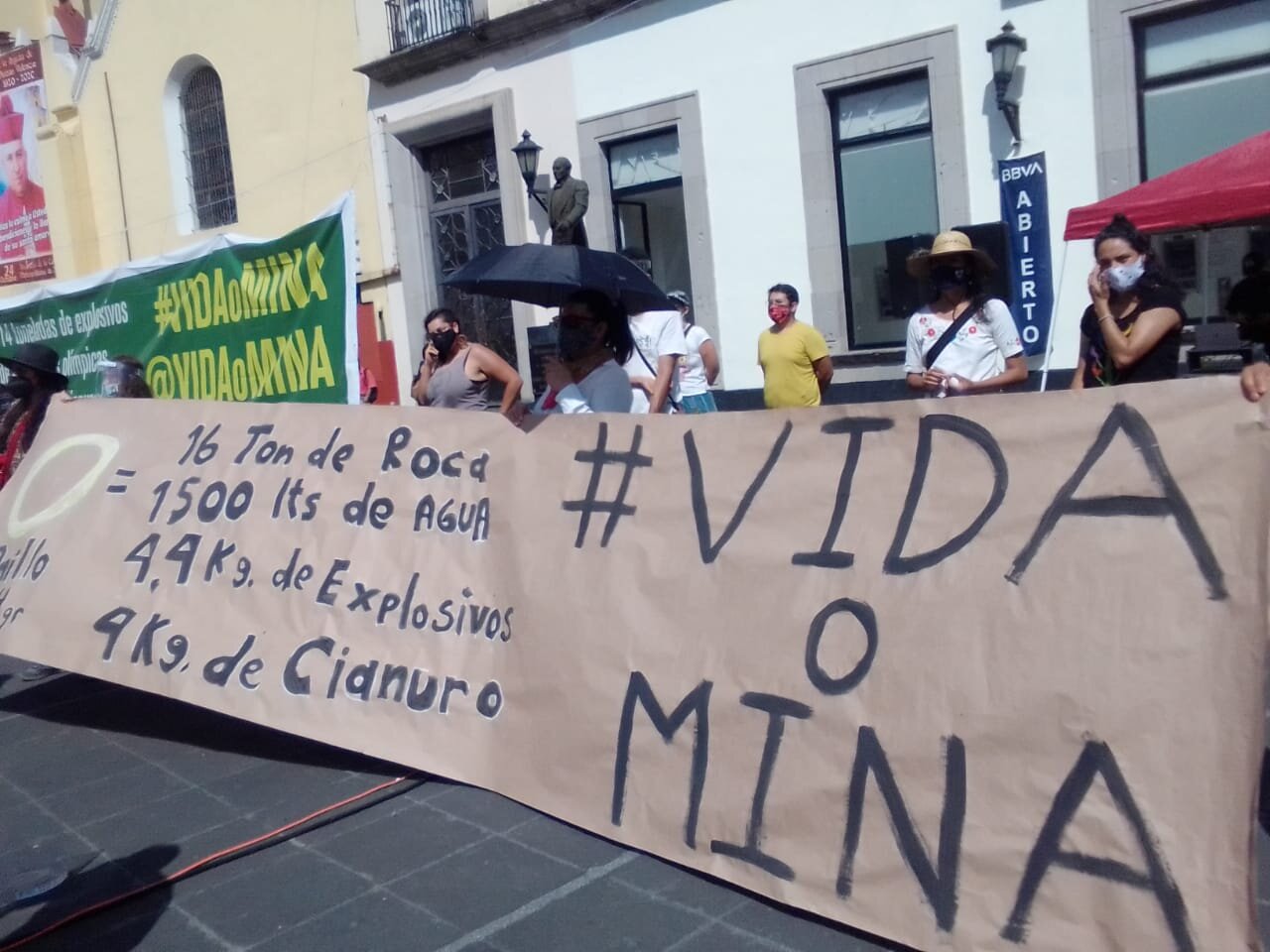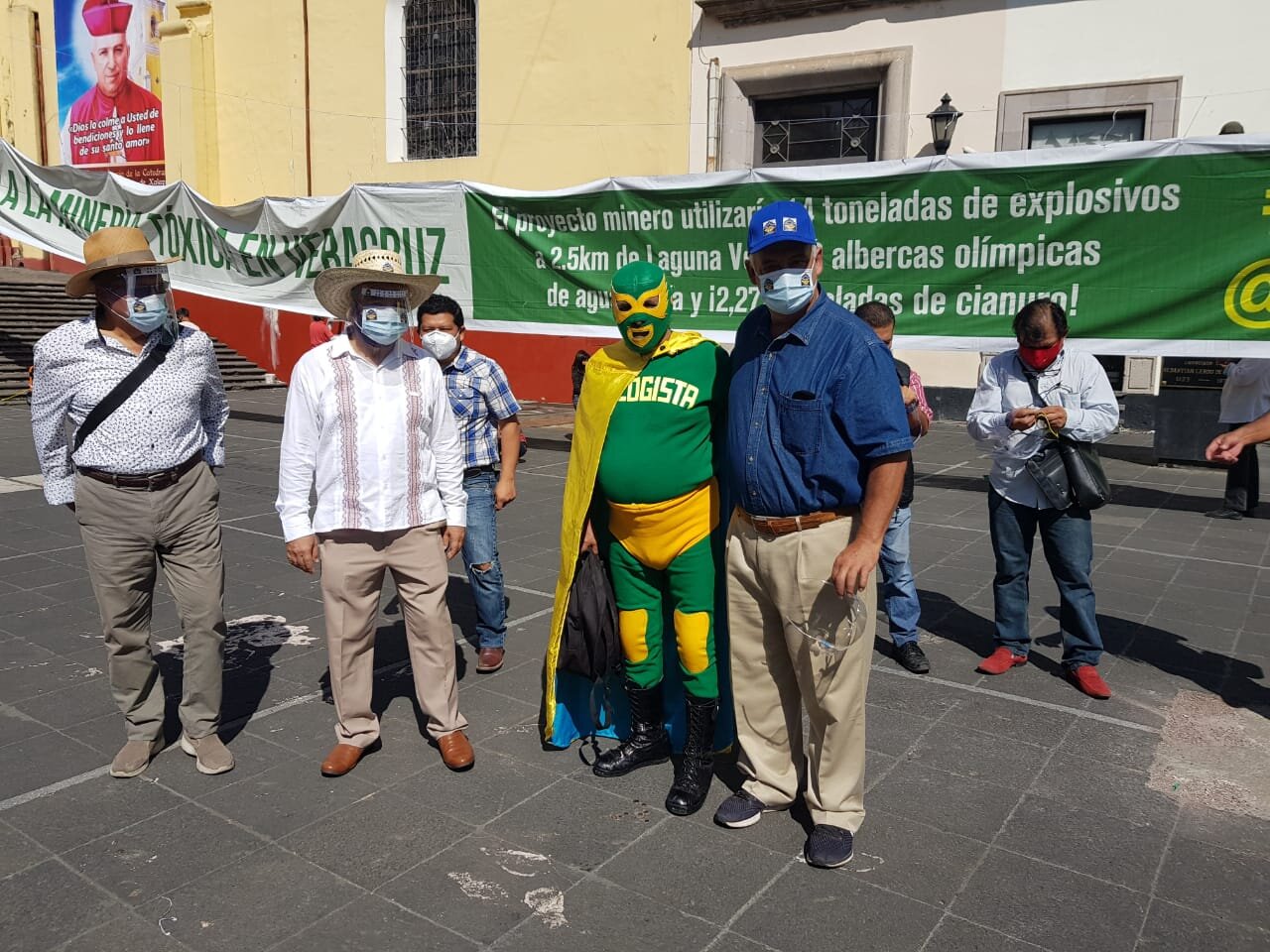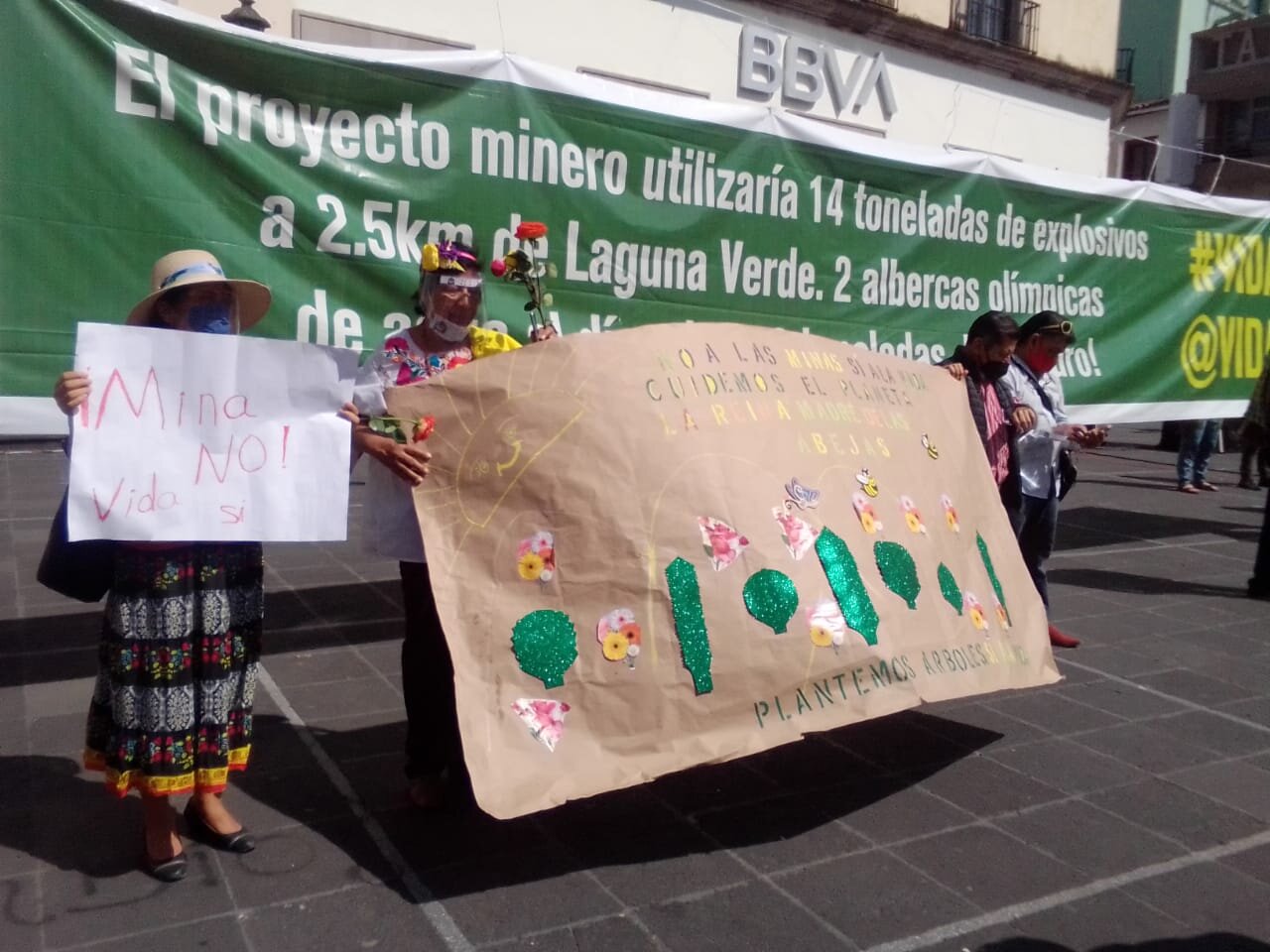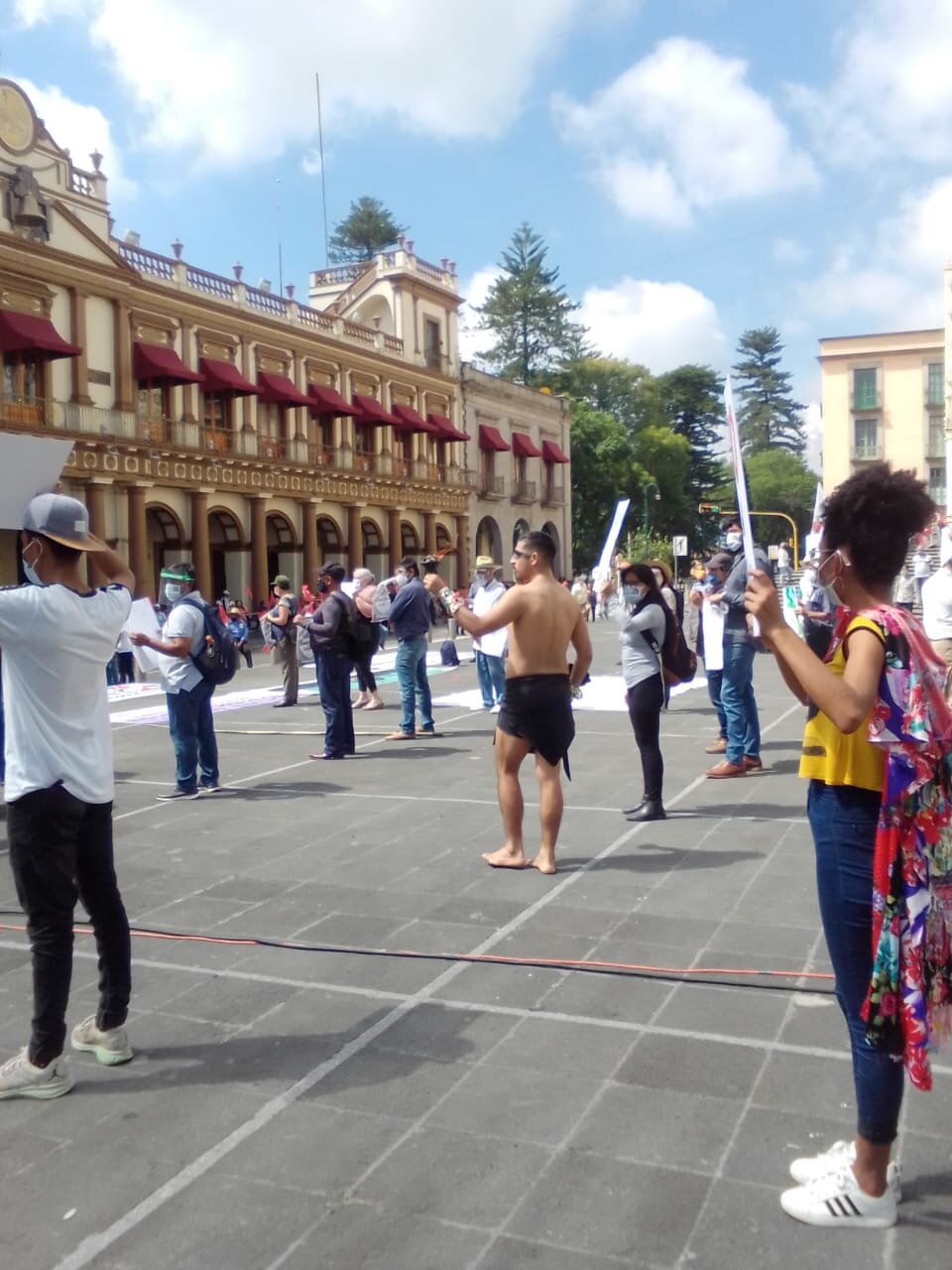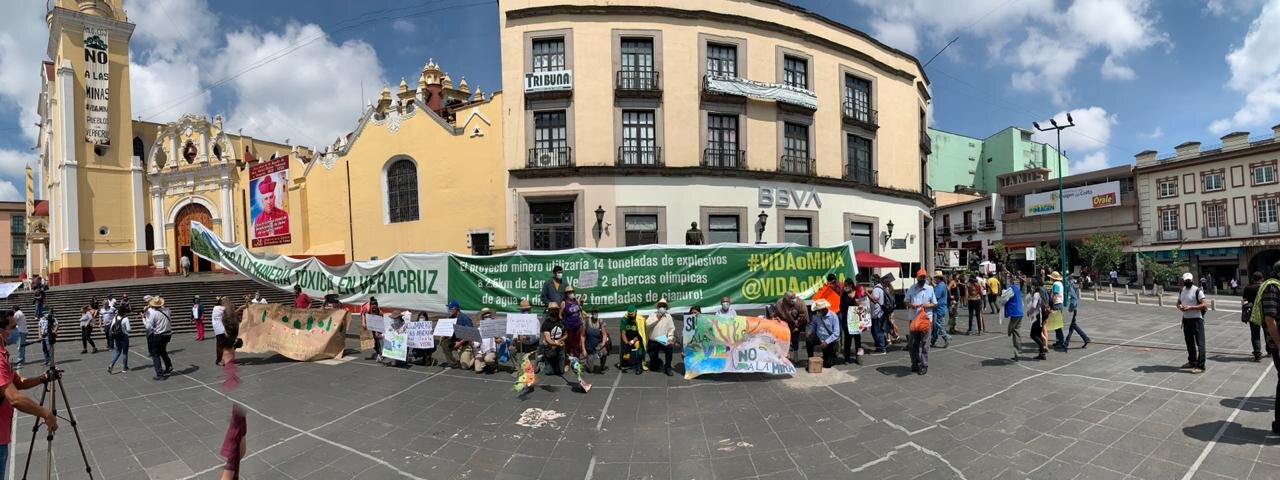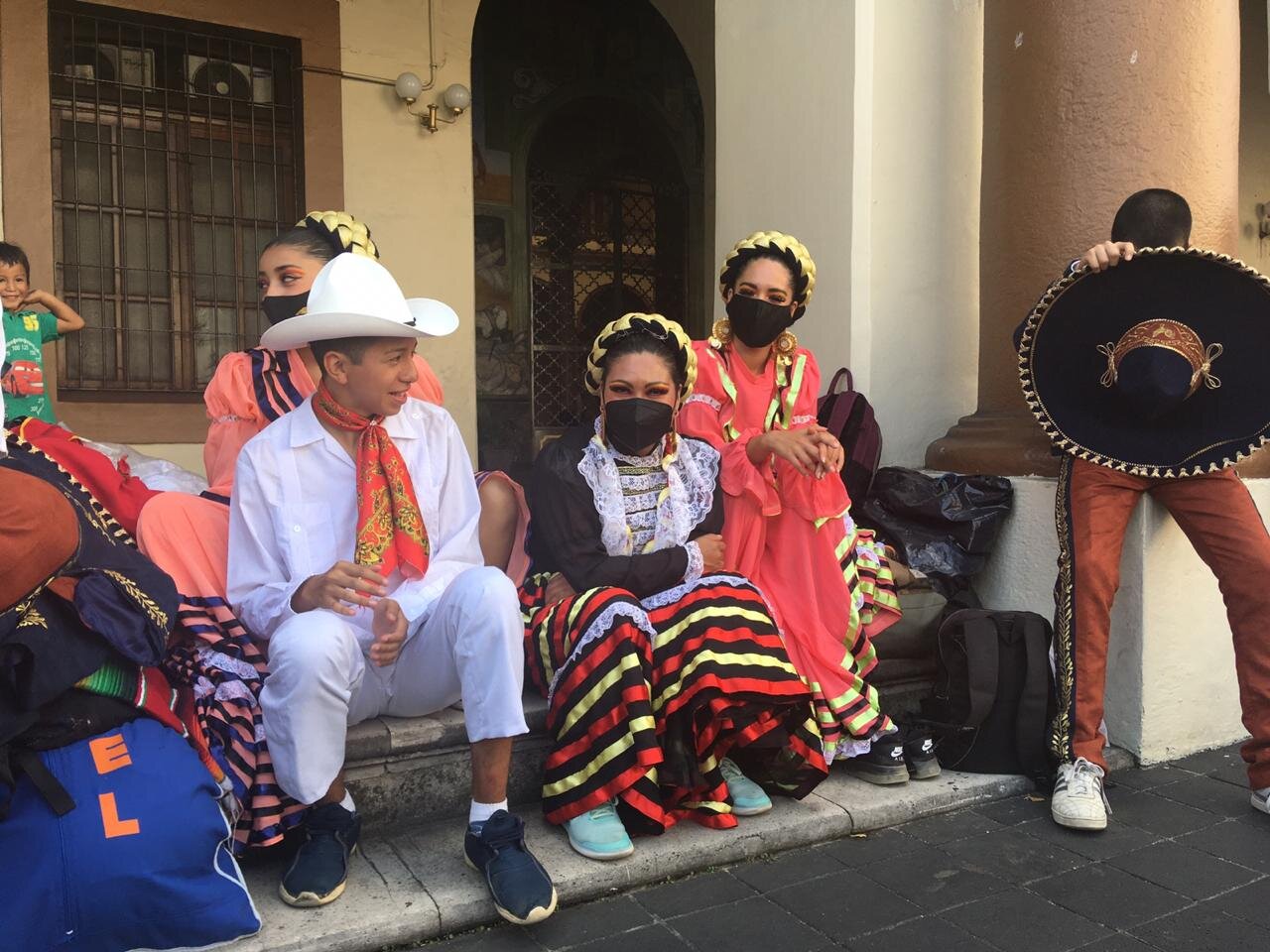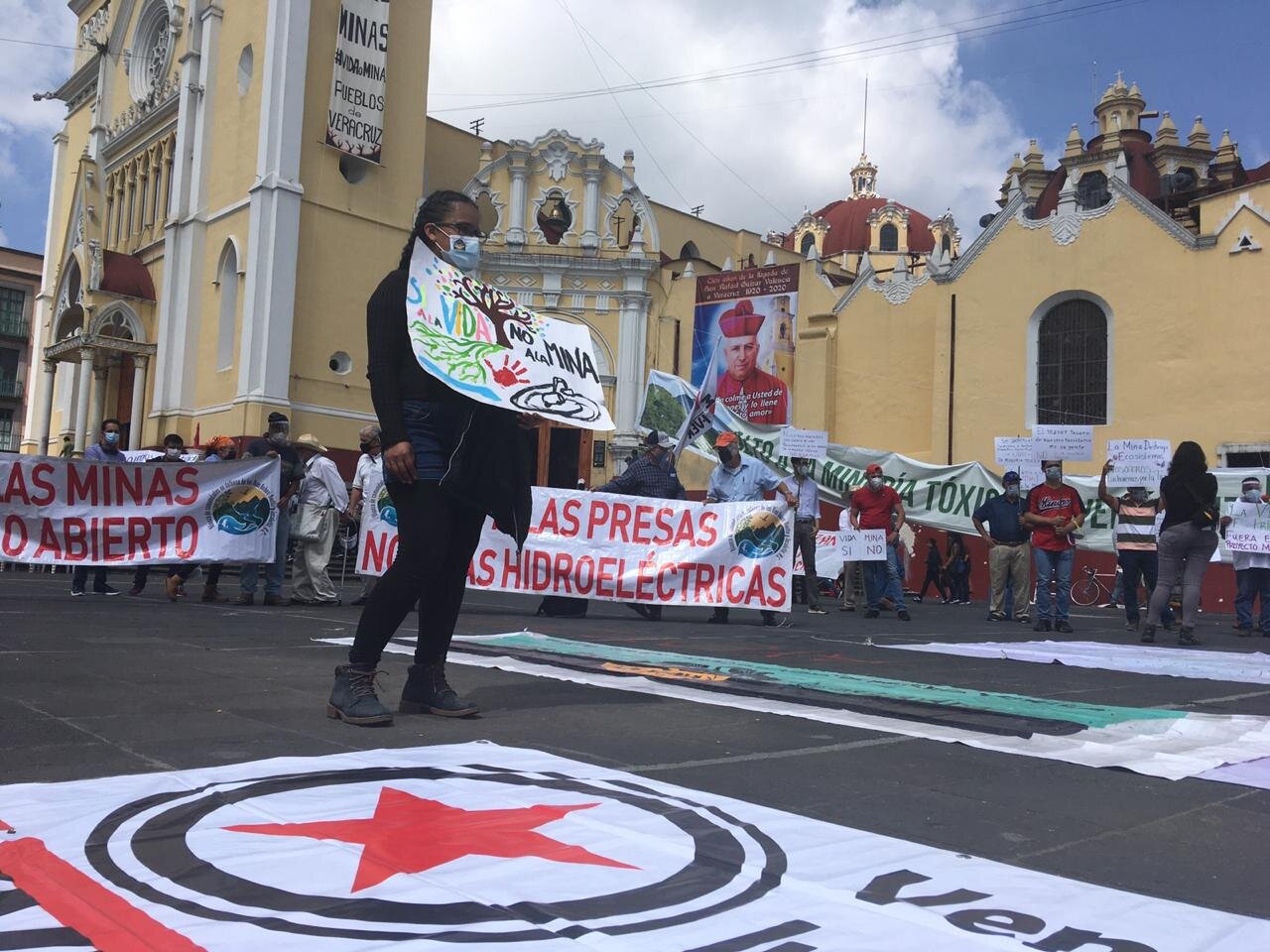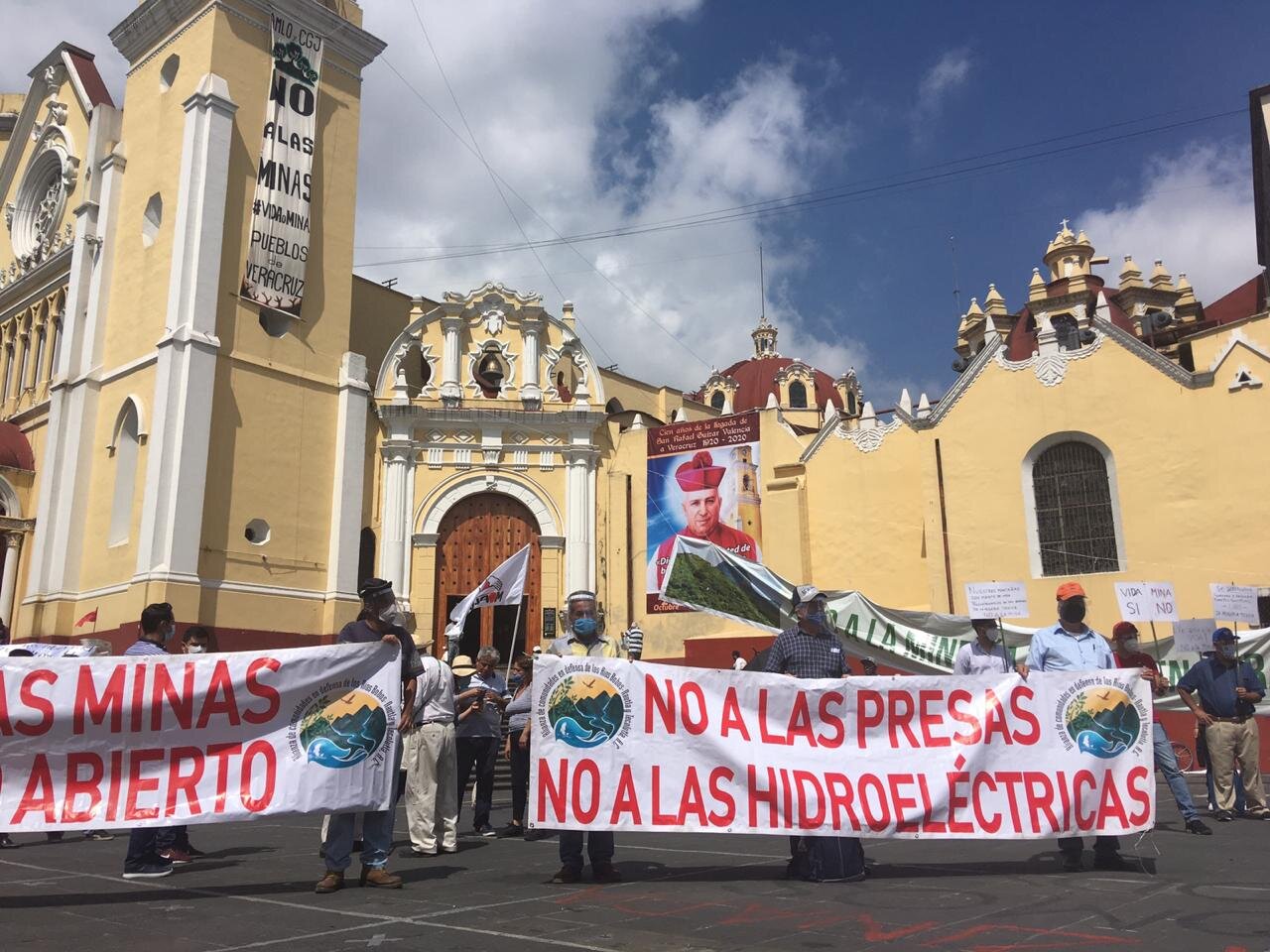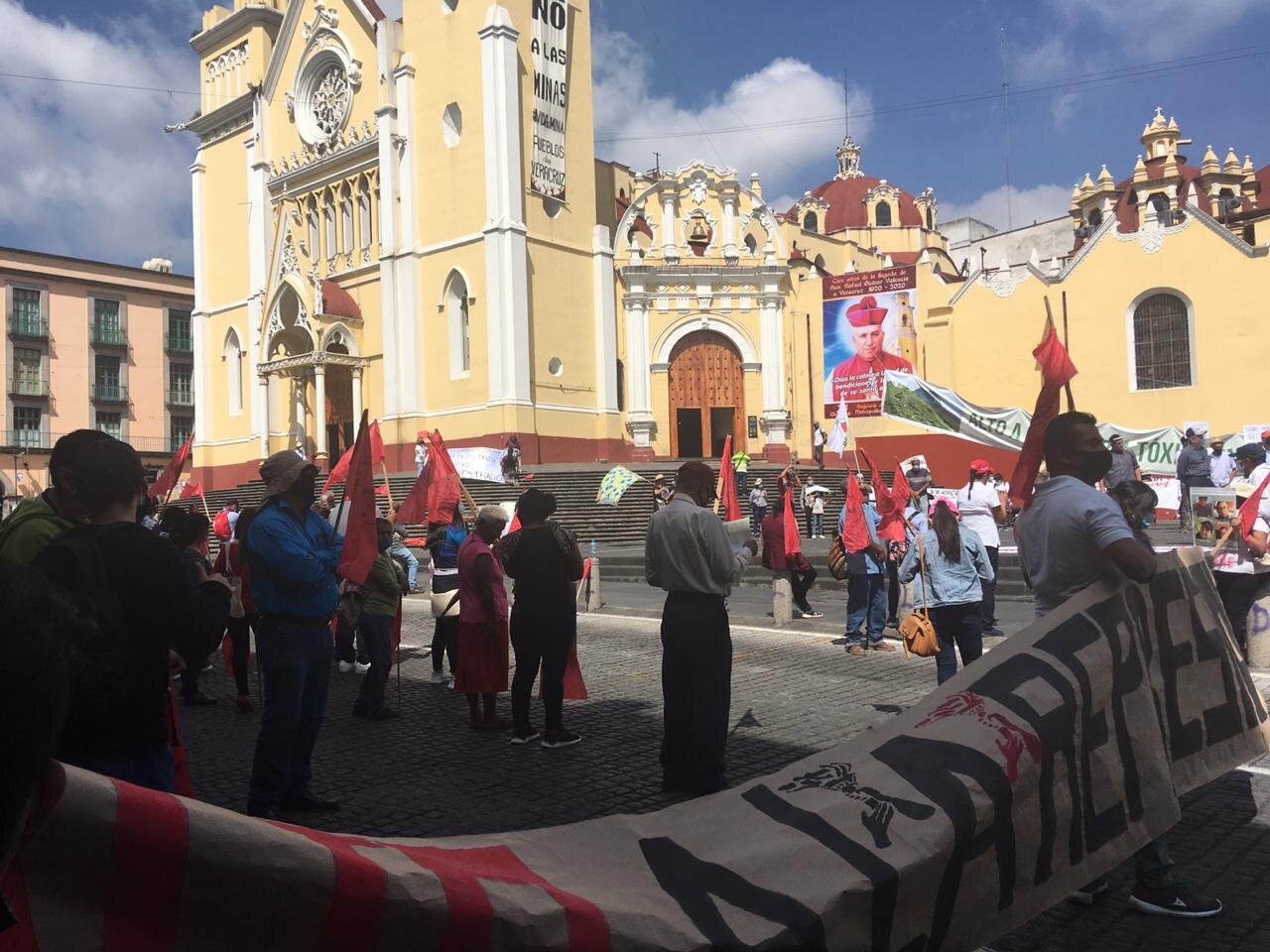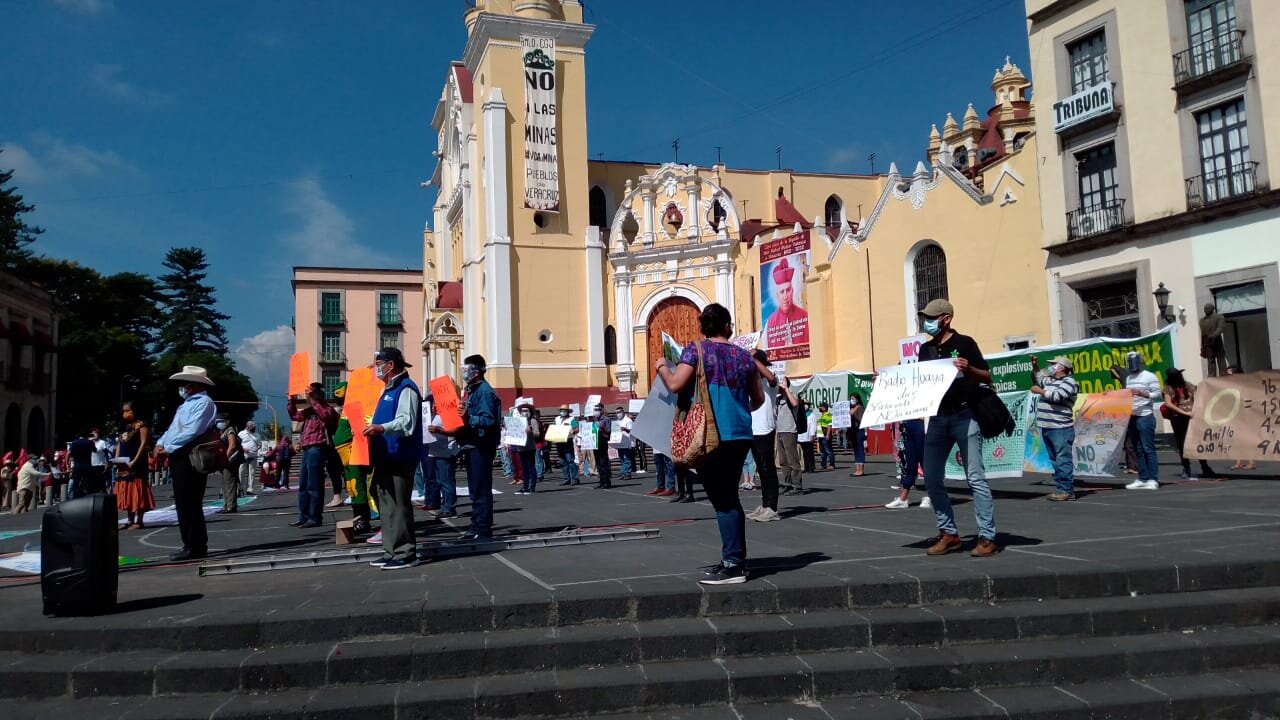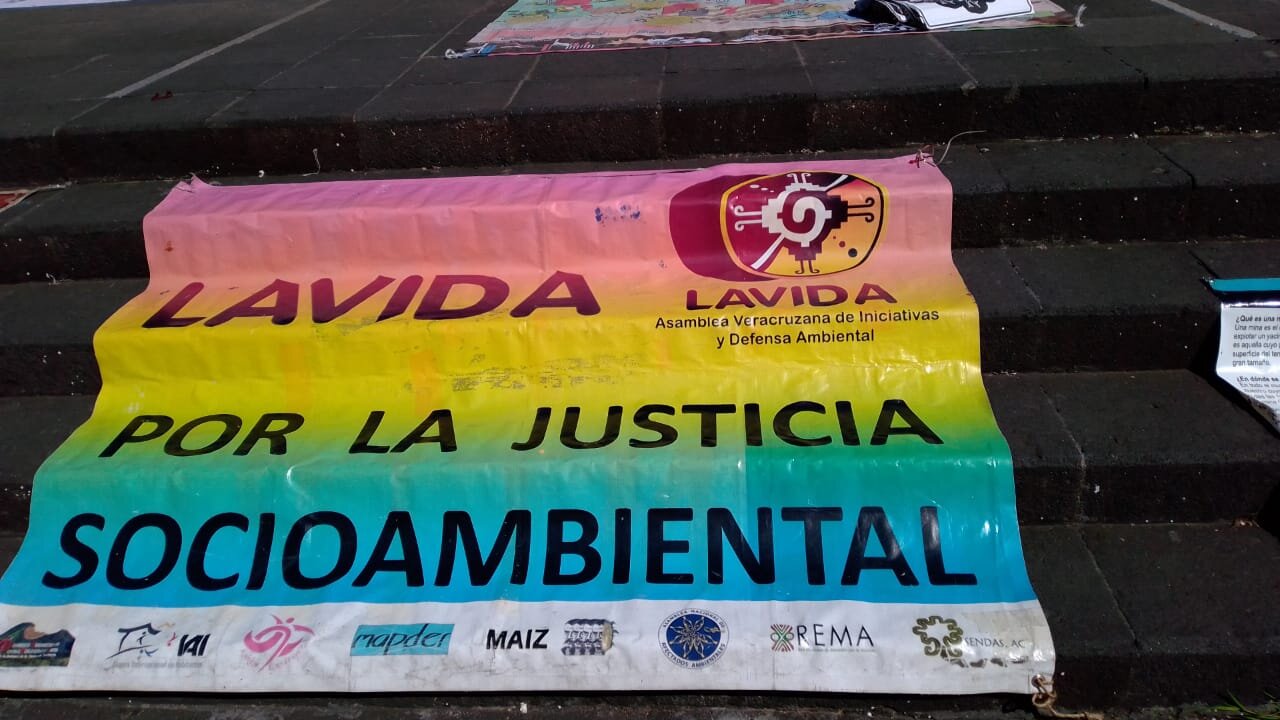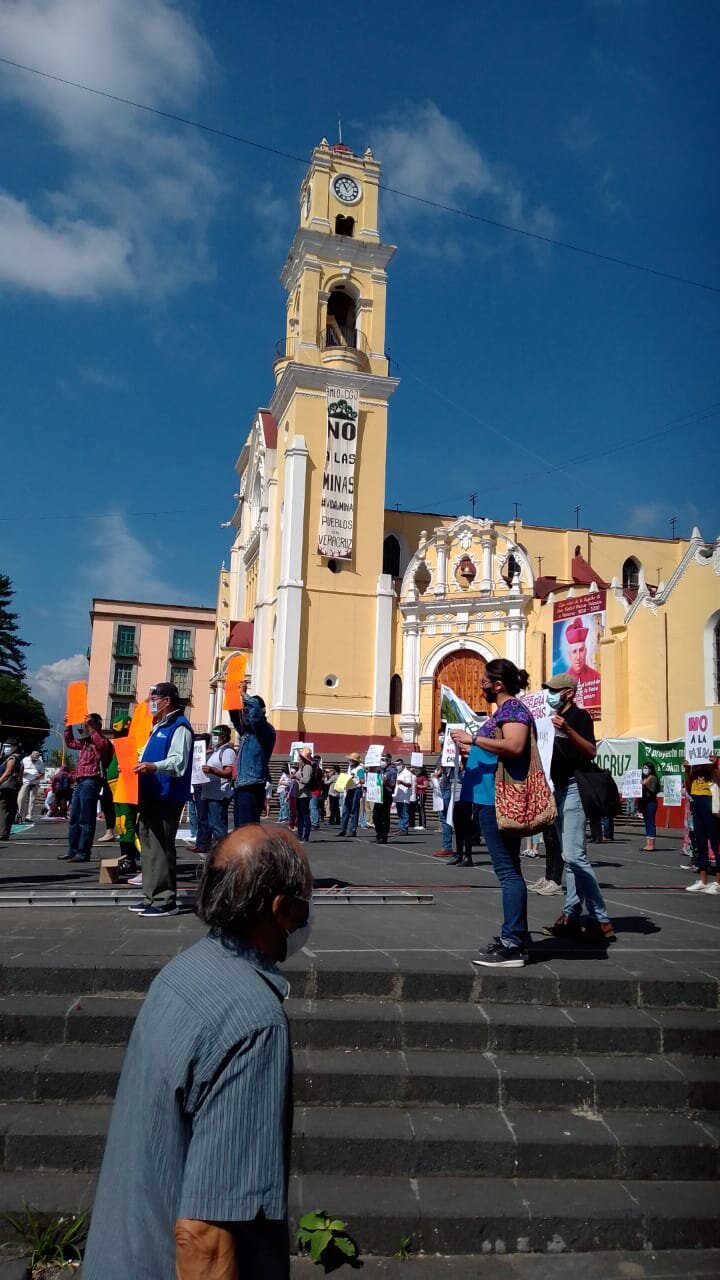¡Sí a La Vida, No a La Mina! (Yes to Life, No to the Mine!)
Protest against the “La Paila” mine project. (Image courtesy of the author.)
This article was produced with essential assistance from Talking Wings Collective.
A new gold mine in Veracruz, Mexico, will be the first one in the world to be opened only two miles away from a nuclear reactor and from many pipelines - all in the middle of a densely populated, touristic area that is also the most important migratory route in North America. These are some of the main reasons why local activists are strongly opposing the project.
A History of Colonial Extraction
Mexico has a long mining history. Before the conquest, gold and silver were sought mainly to make jewelry and offerings. Tin, lead, and copper were also mined in the state of Michoacán after the Purembes (Tarascans) found a way to extract and work it. All these minerals were used to make certain tools, utensils and weapons.
But the history of extractivist mining in Mexico begins with the Spanish invasion. Most of the mineral resources were exported to Spain, and it is stated in the General Archive of the Indies (an important Spanish colonial archive housed in Seville, Spain) that 185,000 kilos of gold and 16,000,000 kilos of silver arrived in Spain from America between 1503 and 1660 alone.
“La Paila” and Other New Projects
Despite the efforts of the Spanish crown, however, Mexico still retains vast mineral wealth, and there are currently 21 mining projects about to start up.
The project that concerns us was once known as “Caballo Blanco” and now as “La Paila,” which is the name of the hill where the project is to be located. This would be an open-pit gold mine on the hill of “La Paila” in the municipality of Alto Lucero, Veracruz.
The mining company is a subsidiary of the Canadian Candelaria Mining Corp., which reports that it has 12 concessions on 19,815 hectares of land (roughly 76.5 square miles) for the main project. The company has also identified four “high priority targets” for further exploration in the surrounding area: Bandera Norte, Bandera Sur, Las Cuevas, and Highway North. If permits for these additional projects are approved, it would significantly increase the footprint of Candelaria’s activity in Veracruz.
A painting by Salvador López artist of "La Vida": interpretation of the territory and the mine. (Image courtesy of the author.)
Impact of Extraction
To operate just one of these projects, thousands of liters of water are required for the leachate lagoon. These are the waste products of the process. They remain in the tanks and contain cyanide, sulfuric acid, mercury and other solvents that will be used to obtain 0.03 grams of gold for each ton of soil. Gold is associated with quartz rocks that must be ground, placed in large mounds, and washed with water mixed with cyanide. This represents a great risk for the populations living downstream from the mine. In addition, the water used for these projects is extracted from the nearby aquifers, leaving the local populations without water.
To extract the rock, large tajos (quarries) are opened that will remain there permanently. Such a process gives no thought to the layer of soil and vegetation that have to be destroyed in order to open these large holes in the earth, leaving a lunar landscape in which life would be impossible.
According to research presented in 2015 in La Jornada Ecoloógica, the following is necessary in order to obtain one ounce of gold, or what is contained in a “US Golden Eagle”:
extraction of 150 tons of rock
40 kilos of explosives (enough to demolish a five-story building)
processing of 25 to 50 tons of earth leached with cyanide solution
release into the environment of three kilos of cyanide salts (enough to kill 60 thousand people)
consumption of 100,000 to 150,000 liters of fresh water (enough to provide services to an average family for one year)
consumption of 1300kws of electrical energy (enough for an average family for a month)
consumption of 450 liters of fossil fuels to maintain water supplies and move mine equipment
emission of 650 kg of CO2 into the atmosphere along with other greenhouse gases such as sulfur dioxide and nitrogen oxide
The researchers also report that this type of project offers only 15 person-hours of income to the region, or “the salary of one person working for two days” (La Jornada Ecoloógica 200, August-September 2015).
Meanwhile, over a 20-year period, a gold mine uses 500 thousand tons of explosives, or roughly 40 percent of the explosives used in World War II. And in this case, those explosives would be used at a distance of only three kilometers from the Laguna Verde nuclear plant and two kilometers from five gas pipelines that pass through the region.
Ecological and Cultural Destruction
The area around the “La Paila” project is also an important migratory corridor known as “el rio de rapaces” ("the river of raptors"). It is the migratory route of hundreds of raptor species that travel between Canada and Central America, as well as a large number of hummingbirds and butterflies. In addition, there are 51 endemic and endangered species that live in this area year round.
There is also a community of 1231 cycads, which have an estimated age of between 2,000 and 3,000 years and are the oldest living vegetation in Mexico.
These kinds of large-scale mining projects also have disastrous repercussions for the historical heritage of the region. In this case, the archaeological heritage of Quiahuixtlan and its surroundings would be destroyed.
And all this without even mentioning the 87 communities that would be directly affected by the project through the destruction of agriculture, livestock and fishing in the region.
We would be left without land, without water, without vegetation, without animals, and without spirit.
That's why we say:
YES TO LIFE, NO TO THE MINE!

